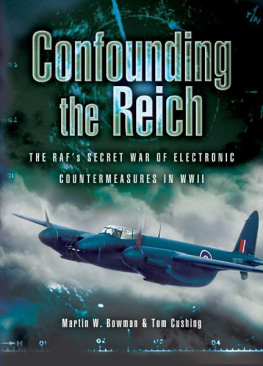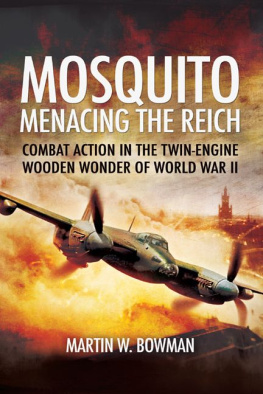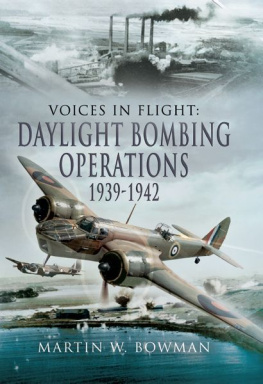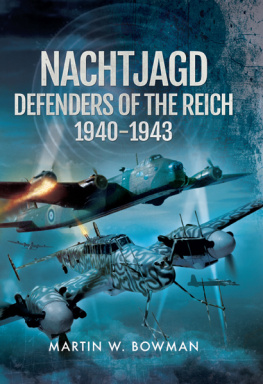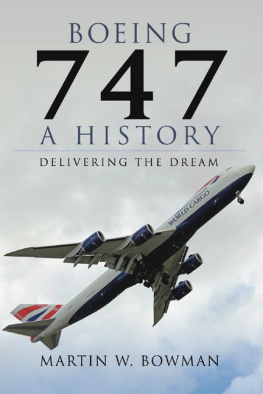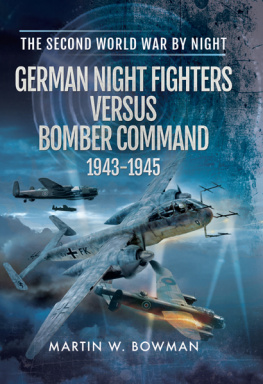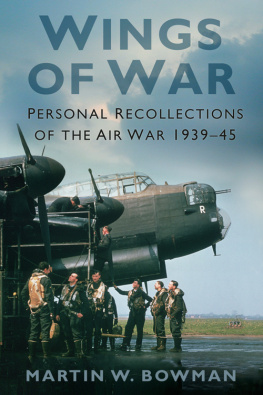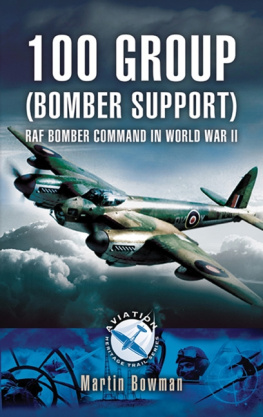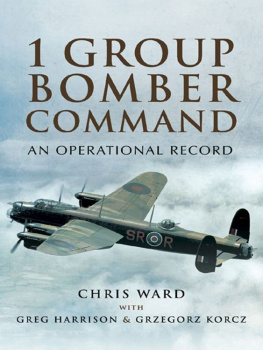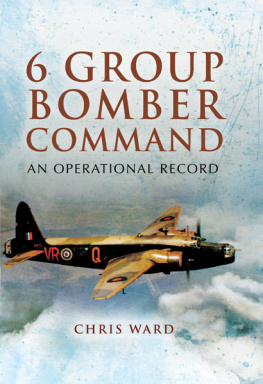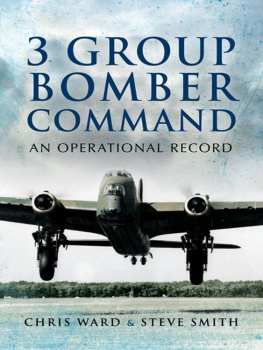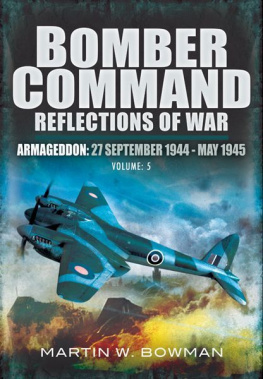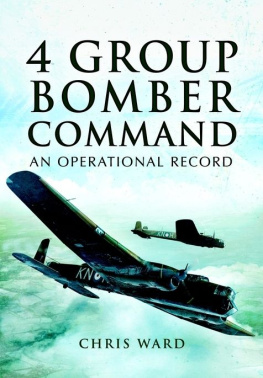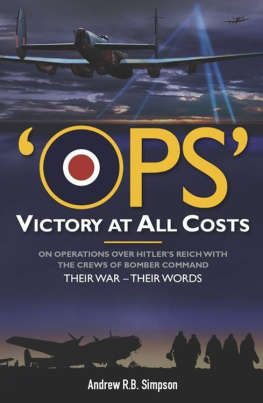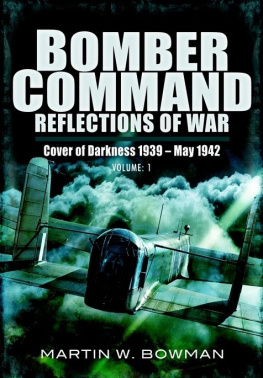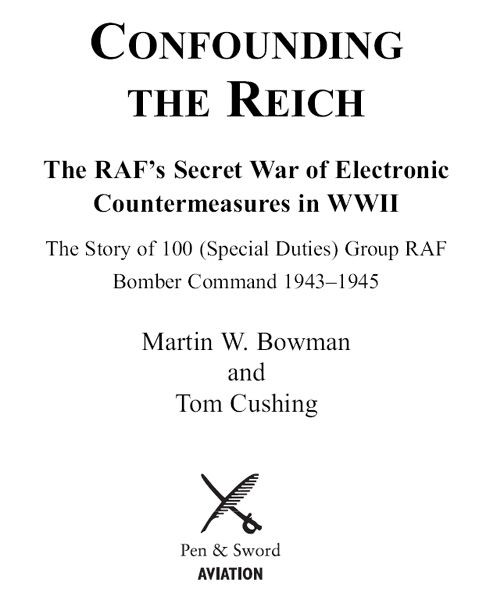
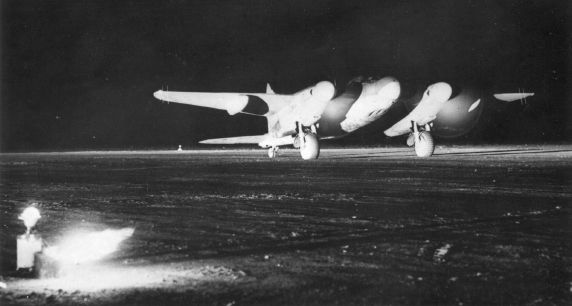
A newly delivered NFXXX of No 85 Squadron taxies out at Swannington at the start of a Night Intruder over Germany. The unit started swapping its NFX VIIs and XIXs for definitive NFXXXs in September 1944. (IWM)
First published in
Great Britain in 2004
By Pen and Sword Aviation
an imprint of Pen and Sword Books Ltd
47 Church Street, Barnsley,
South Yorkshire, S70 2AS, England
Copyright Martin W. Bowman, 2004
ISBN 1 84415 124 7
PRINT ISBN: 9781844151240
PDF ISBN: 9781783377749
EPUB ISBN: 9781783379927
PRC ISBN: 9781783379774
The right of Martin W. Bowman to be identified as Author of this Work has been asserted by him in
accordance with the Copyright, Designs and Patents Act 1988.
A CIP catalogue record for this book
is available from the British Library
All rights reserved. No part of this book may be
reproduced or transmitted in any form or by any
means, electronic or mechanical including
photocopying, recording or by any information
storage and retrieval system, without permission
from the Publisher in writing.
Typeset in Times New Roman 10 on 12 point by
Mac Style Ltd, Scarborough, N. Yorkshire
Printed and bound in England by
CPI UK
Pen & Sword Books Ltd incorporates the Imprints of
Pen & Sword Aviation, Pen & Sword Maritime,
Pen & Sword Military, Wharncliffe Local History,
Pen & Sword Select, Pen & Sword Military Classics
and Leo Cooper.
For a complete list of Pen & Sword titles, please contact
Pen & Sword Books Limited
47 Church Street, Barnsley, South Yorkshire
S70 2AS, England
Email:
Website: www.pen-and-sword.co.uk
Contents
The time will come when thou
Shall lift thine eyes
To watch a long drawn battle
In the skies
While aged peasants, too amazed
For words
Stare at the flying fleets
Of wondrous birds
England, so long mistress of the sea
Where wind and waves confess
Her sovereignty
Her ancient triumphs yet on high
Shall bear
And reign, the sovereign of
The conquered air
Luna Habitalis By Thomas Gray, 1737
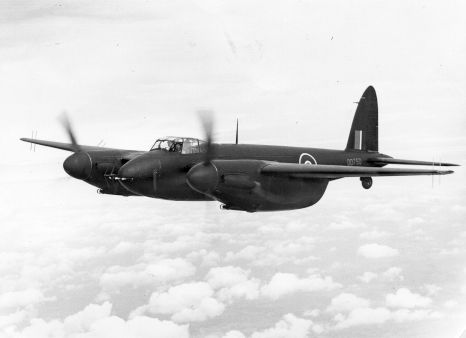
NFIIs first equipped 157 Squadron on 13 December 1941. DD750, which served with 157, 25, 239 and 264 Squadrons, is fitted with AI Mk.IV arrowhead, and wing-mounted azimuth aerials. All four machine guns were deleted to make room for Serrate apparatus. The all-black scheme could slow the aircraft by up to 23 mph (37 kph). When NFIIs began equipping 100 Group in December 1943, the extended operational service had begun to tell and the Merlin 21s were well used. Finally, in February 1944, all reconditioned engines were called in and while stocks lasted, only Merlin 22s were installed. (via Philip Birtles).
Acknowledgements
I am enormously grateful to the following people for making it possible to include detailed information in this book. Don F. Aris very kindly allowed me to quote from his superb unpublished three-volume history of 141 Squadron, which has taken him a lifetime to compile. His fellow armourer, Johnny Claxton, kindly made these available for a long period of time. Dr Theo Boiten provided enormous expertise on victories and details of German crews. As always, I am most grateful to Mike Bailey for his guidance, proofing and kind loan of much-needed books for research purposes. Bob Collis unstintingly provided his customary expertise and furnished much valuable information on aircraft and crews, often in very detailed and painstaking correspondence. Last but not least I would like to pay tribute to Tom Cushing for his most marvellous assistance, and for so very graciously giving me free rein to use his vast historical collection of memorabilia, documents and photographs at Little Snoring. Time spent at his house on Snoring airfield, served with plentiful cups of tea from his lovely wife Wendy, have been some of the most enjoyable interludes during the preparation of this book.
Jerry Scutts and Philip J. Birtles provided many superb photographs. Steve Jefferson worked wonders making prints from glass negatives. I am no less grateful to the following for their help and support throughout: The late Michael Allen DFC**; Jim Avis; Captain Buddy Badley; Len Bartram; Tim Bates; Derek Taffy Bellis DFC*; Frank Bocock; Eileen Boorman; Les Bostock; Bill Bridgeman; Lewis Brandon DSO, DFC*; Jean Bunting; Peter Celis; Squadron Leader Joe Cooper AFC; Andrew Crotch; the late Squadron Leader John Crotch DFC; Henry Hank Cooper; Hans-Peter Dabrowski; Squadron Leader Mike Daniels; Bob Davies AFC; Ernie Frohloff; Legion Magazine; Richard T. Goucher; Peter B. Gunn, author of RAF Great Massingham; Terry Groves; Alan Hague, Curator, Norfolk & Suffolk Aviation Museum; Lewis Heath; Gerhard Heilig; Raymond Hicks; Leslie Dutch Holland; George Honeyman; Stephen Hutton; Harry Jeffries; Wing Commander Howard C. Kelsey DSO DFC*; Geoff Liles; Ron Mackay; Sister Laurence May; Neville Miller; W. H. Miller DFC; Mosquito Aircrew Association; Simon Parry, Murray Peden DFC QC; Eric Phillips; Don Prutton; Barbara and John Rayson G.Av.A; Harry Reed DFC; Alf Rogers; Group Captain J. K. Sport Rogers OBE FBIM RAF (Retd); Squadron Leader Derek Rothery RAF (Retd); Walter Rowley; Wing Commander Philip Russell DFC; Group Captain J. A. V. Short MBIM; Group Captain E. M. Smith DFC* DFM; Martin Staunton; Robert Bob Symon; Harry Welham DFC; Graham Chalky White; Squadron Leader R. G. TimWoodman DSO DFC; Johnny Wynne DFC and finally the City of Norwich Aviation Museum.
Introduction
O n 8 November 1943, 100 (Special Duties) Group of RAF Bomber Command was formed. The object was to consolidate the various squadrons and units that had been fighting a secret war of electronics and radar countermeasures, attempting to reduce the losses of the heavy bombers and their hard-pressed crews in Bomber Command. This secret war involved the use of air and ground radars, homing and jamming equipment, special radio and navigational aids, and intruding night-fighters to seek out and destroy their opposite numbers, the Ju 88s and Bf 110s of the Nachtjgdgeschwader now defending the vivid night skies of the Third Reich with everincreasing success.
While there were various radar counter-measures that could be activated from the ground, the airborne operations took two distinct forms. One was a force of heavy bomber aircraft flying over Germany and occupied Europe, carrying a variety of radar and radio jamming equipment, sometimes on spoofing operations; the other was provided from the home defence night-fighter squadrons. Since June 1943 these had been carrying out high-level, freelance Intruder sorties specifically against the German night-fighters.
These activities, conducted by specialist bomber and night-fighter crews, and the equipment they used, were cloaked under some weird and strange-sounding code-names such as Serrate, Mandrel, Jostle, Monica and Airborne Cigar. The night-fighter crews who completed a first tour on one of seven fighter squadrons in 100 Group could expect to go for their rest of six months either to the Bomber Support Training Unit (BSTU), or the Bomber Support Development Unit (BSDU). In the latter, they were still expected to continue flying on operations because the new equipment could only be tested adequately on the job. In those halcyon days that meant over the other side.
Next page
